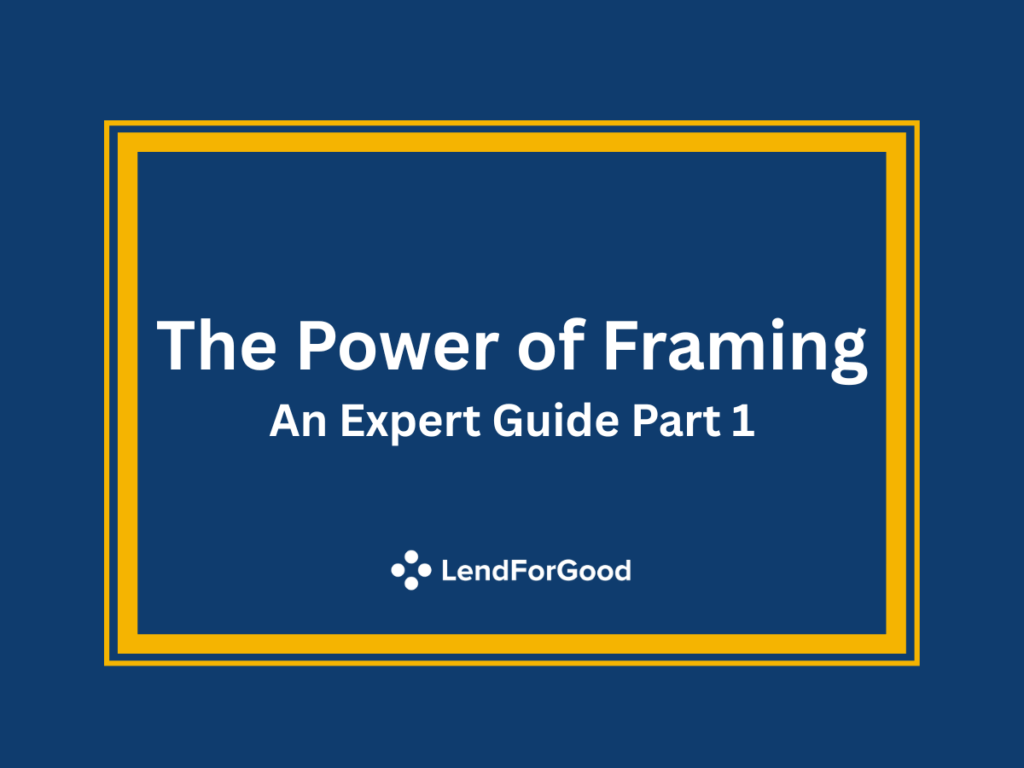This is article 1 of a 2-part series from Co-Founder and Chief Impact Officer, Tom Dawkins, aka the crowdfunding expert. He reflects on his key lessons in a career of crowdfunding that can make or break a campaign… (Hint: it’s all about the framing!)
The Power of Framing – Are You Asking, Or Inviting?
A frame is “a set of concepts and theoretical perspectives on how individuals, groups, and societies organise, perceive, and communicate about reality.”|
You can think of it as the “lens” someone uses to see the world, the instinctive story someone tells themselves about what they are seeing. It’s how we make sense of the world, basically.
I coach a lot of founders and one of the things I see repeatedly is how powerful framing is.
People often focus on the external dimensions of this – the story we tell to the market – but more powerful and important, but also more invisible, is the story we tell ourselves about what we’re doing and who we are.
This story will influence our decisions and subtle and essential ways.
For example, what are we doing when we are fundraising?
The obvious answer is “asking for money.”
But this is not a helpful or inspiring frame.
Because for a lot of people, that can feel like begging, which triggers feelings of shame, fear of failure and crippling cognitive dissonance.
Instead, think of fundraising as an invitation.
The fundraiser is always inviting the potential funder to be part of something.
There’s a mutual exchange going on, even if the “investment” is a philanthropic donation.
The funder has capital, even if only a modest amount, which they may be willing to contribute to something that creates an outcome they care about.
The fundraiser has the plan. They are saying, let’s put capital here, which will allow this to happen, which will lead to that outcome you care about.
This is doubly true if the funds are an investment which expects a return. The funder will need to be convinced that the plan has a sufficient (in their eyes) likelihood of producing the outcomes they care about, both financially and in terms of impact.
But the truth is, this is always how it works.
Which is why impact fundraising is not begging, and to frame it like that is likely to just sap your energy and enthusiasm.
You’re telling yourself a disempowering story that frames you as the recipient of largess. Like you’re Oliver Twist asking for a little more, when in fact you’re a courageous ship’s captain, inspiring your crew to seek their destiny across the horizon, confident that you have the plan that will get them there.
Remember: people don’t fund projects that have problems (“we need money”) but which solve problems (“we will make this impact….”). And to solve problems you must have a clear plan.
Which everyone on LendForGood has! That’s the nature of being an impact enterprise.
It’s this plan you need to sell, by inviting others to join you to make it a reality.
In this way, recruiting donors or investors is no different than recruiting team members.
It’s the coming together of these capabilities that makes the magic happen, but people won’t join if they don’t believe it can work, and they won’t join if they’re not invited.
By Tom Dawkins
Cofounder and Chief Impact Officer
Part 1 of 2 posts on the power of framing. Article 2 coming soon…
LendForGood is a crowdlending platform and global community of individuals and organisations collaborating to mobilise millions in impact capital for courageous impact enterprises.
Join the LendForGood community and sign up for free as a lender today.


